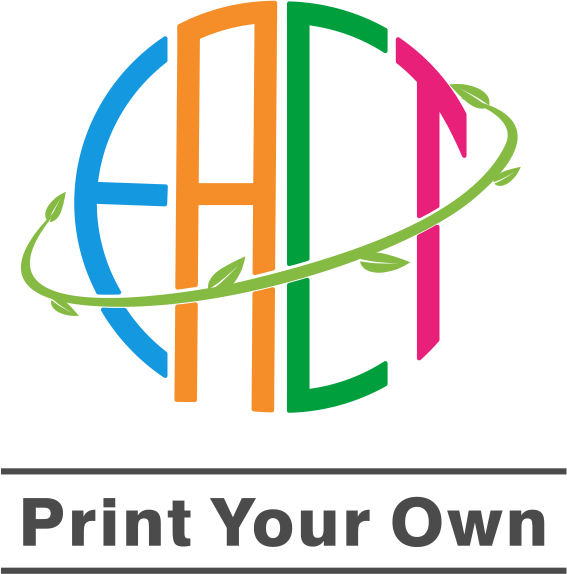Cotton vs. Polyester: What's the Difference?
You’ve probably noticed that many of the clothes you wear or the upholstery you buy are made from either cotton or polyester. These two most common fabrics dominate the textile world. Yet, many people still struggle to understand the real differences between them. Are they similar? Which one is better for daily wear, and which one performs better in specific situations? In this guide, we’ll tell you the differences between cotton and polyester by comparing their qualities, benefits, and everyday applications. By the end, you’ll clearly understand the differences and know which fabric is better suited to your needs.
Pros of Cotton
Softness and Comfort: Perfect for clothing worn next to the skin.
Breathable: Absorbs moisture well, suitable for warm climates.
Versatile Dyeing: Takes colors well, can present bright patterns and designs.
Eco-Friendly: Biodegradable and generally considered environmentally friendly.
Cons of Cotton
Shrinking and Wrinkling: Requires careful washing and sometimes ironing.
Durability: May wear out faster than synthetic fibers.
Drying Time: Absorbs water readily, so drying can take time.
Sun Sensitivity: Prolonged exposure to sunlight may cause fading.
What is Polyester?
Polyester, on the other hand, is a man-made fiber produced from petroleum-based polymers. Unlike cotton, it is not naturally derived, but it is durable and wrinkle-resistant. Polyester is often chosen for activewear, uniforms, and upholstery because it holds its shape and color even after repeated washings.
Pros of Polyester
Durable: Resistant to shrinking, stretching and tearing.
Quick-Drying: Absorbs very little water, making drying fast.
Wrinkle-Resistant: Maintains shape with minimal ironing.
Holds Color Well: Keeps colors vibrant even after repeated washing.
Cons of Polyester
Less Breathable: Can make you feel hotter in hot conditions.
Lower Comfort: Not as soft as natural fibers.
Static and Pilling: May generate static and develop small pills over time.
Environmental Impact: Petroleum-based and less eco-friendly.
What’s the Difference Between Cotton and Polyester?
Cotton and polyester differ in their natural properties, comfort, durability, and maintenance needs. Cotton is soft, breathable, and ideal for everyday wear, while polyester is durable, quick-drying, and low-maintenance, suitable for activewear or items that see frequent use.
To make the differences more clear, here’s a direct comparison:
Printing on Cotton vs Polyester
Both cotton and polyester play an important role in textile design and printing. You may ask: which fabric is better for printing? The answer depends on the type of look and feel you want to achieve.
For example, digital printing on cotton fabric produces vivid, natural-looking results with excellent softness and breathability. Cotton’s absorbent fibers hold dye well, allowing intricate designs to appear crisp while maintaining the fabric’s natural comfort. This makes cotton the preferred choice for casual wear, children’s clothing, and lifestyle products.
Meanwhile, digital printing on polyester fabric offers unmatched durability and color vibrancy. The printing process bonds colors directly to the synthetic fibers, ensuring long-lasting patterns that won’t easily fade, even with frequent washing. This makes polyester ideal for activewear, promotional garments, and decorative items where longevity is essential.
Both options have distinct strengths, and many designers choose based on end use: cotton for softness and natural appeal, polyester for bold prints and endurance.
Which Fabric Should You Choose?
Choosing between cotton and polyester depends on your specific needs:
For Comfort and Everyday Wear: Cotton is ideal. Its natural fibers ensure breathability and softness.
For Durability and Active Use: Polyester is better suited. It resists stretching, shrinks less, and dries quickly.
For a Balanced Option: Cotton-polyester blends offer a compromise, combining softness with durability.
Understanding these differences will help you pick the right fabric for each project, whether you’re designing clothes, accessories, or home décor.
Begin Your Fabric Creations
Starting a project with cotton or polyester fabrics begins with understanding the qualities each material offers. Consider factors such as softness, breathability, durability, and the type of design you want to achieve.
Once you’ve chosen the right fabric, sourcing high-quality material is essential. CustomPrintingFabric offers a wide range of premium fabrics and professional guidance, helping you confidently create your own textile. With the right fabric and support, your creative ideas can easily become reality.
What is Cotton?
Cotton is a natural fiber harvested from the seed hairs of the cotton plant. Known for its softness and comfort, cotton has been a staple in the textile industry for centuries. It is widely used in clothing, curtains, pillows, towels and bedding, etc.Pros of Cotton
Softness and Comfort: Perfect for clothing worn next to the skin.
Breathable: Absorbs moisture well, suitable for warm climates.
Versatile Dyeing: Takes colors well, can present bright patterns and designs.
Eco-Friendly: Biodegradable and generally considered environmentally friendly.
Cons of Cotton
Shrinking and Wrinkling: Requires careful washing and sometimes ironing.
Durability: May wear out faster than synthetic fibers.
Drying Time: Absorbs water readily, so drying can take time.
Sun Sensitivity: Prolonged exposure to sunlight may cause fading.
What is Polyester?
Polyester, on the other hand, is a man-made fiber produced from petroleum-based polymers. Unlike cotton, it is not naturally derived, but it is durable and wrinkle-resistant. Polyester is often chosen for activewear, uniforms, and upholstery because it holds its shape and color even after repeated washings.
Pros of Polyester
Durable: Resistant to shrinking, stretching and tearing.
Quick-Drying: Absorbs very little water, making drying fast.
Wrinkle-Resistant: Maintains shape with minimal ironing.
Holds Color Well: Keeps colors vibrant even after repeated washing.
Cons of Polyester
Less Breathable: Can make you feel hotter in hot conditions.
Lower Comfort: Not as soft as natural fibers.
Static and Pilling: May generate static and develop small pills over time.
Environmental Impact: Petroleum-based and less eco-friendly.
What’s the Difference Between Cotton and Polyester?
Cotton and polyester differ in their natural properties, comfort, durability, and maintenance needs. Cotton is soft, breathable, and ideal for everyday wear, while polyester is durable, quick-drying, and low-maintenance, suitable for activewear or items that see frequent use.
To make the differences more clear, here’s a direct comparison:
| Feature | Cotton | Polyester |
|---|---|---|
| Feel | Soft, gentle on the skin | Smooth but less soft than cotton |
| Breathability | Highly breathable and moisture-absorbent | Less breathable, can feel warmer |
| Durability | Prone to shrinking and wear | Highly durable, resistant to stretching and tearing |
| Wrinkle Resistance | Wrinkles easily | Resists wrinkles, maintains shape |
| Care | Needs gentle washing, may shrink | Easy care, quick-drying, low maintenance |
| Eco-Friendliness | Biodegradable, natural fiber | Petroleum-based, less eco-friendly |
| Common Uses | Everyday clothing, bedding, casual wear | Sportswear, uniforms, outdoor gear |
Printing on Cotton vs Polyester
Both cotton and polyester play an important role in textile design and printing. You may ask: which fabric is better for printing? The answer depends on the type of look and feel you want to achieve.
For example, digital printing on cotton fabric produces vivid, natural-looking results with excellent softness and breathability. Cotton’s absorbent fibers hold dye well, allowing intricate designs to appear crisp while maintaining the fabric’s natural comfort. This makes cotton the preferred choice for casual wear, children’s clothing, and lifestyle products.
Meanwhile, digital printing on polyester fabric offers unmatched durability and color vibrancy. The printing process bonds colors directly to the synthetic fibers, ensuring long-lasting patterns that won’t easily fade, even with frequent washing. This makes polyester ideal for activewear, promotional garments, and decorative items where longevity is essential.
Both options have distinct strengths, and many designers choose based on end use: cotton for softness and natural appeal, polyester for bold prints and endurance.
Which Fabric Should You Choose?
Choosing between cotton and polyester depends on your specific needs:
For Comfort and Everyday Wear: Cotton is ideal. Its natural fibers ensure breathability and softness.
For Durability and Active Use: Polyester is better suited. It resists stretching, shrinks less, and dries quickly.
For a Balanced Option: Cotton-polyester blends offer a compromise, combining softness with durability.
Understanding these differences will help you pick the right fabric for each project, whether you’re designing clothes, accessories, or home décor.
Begin Your Fabric Creations
Starting a project with cotton or polyester fabrics begins with understanding the qualities each material offers. Consider factors such as softness, breathability, durability, and the type of design you want to achieve.
Once you’ve chosen the right fabric, sourcing high-quality material is essential. CustomPrintingFabric offers a wide range of premium fabrics and professional guidance, helping you confidently create your own textile. With the right fabric and support, your creative ideas can easily become reality.

 USD
USD



